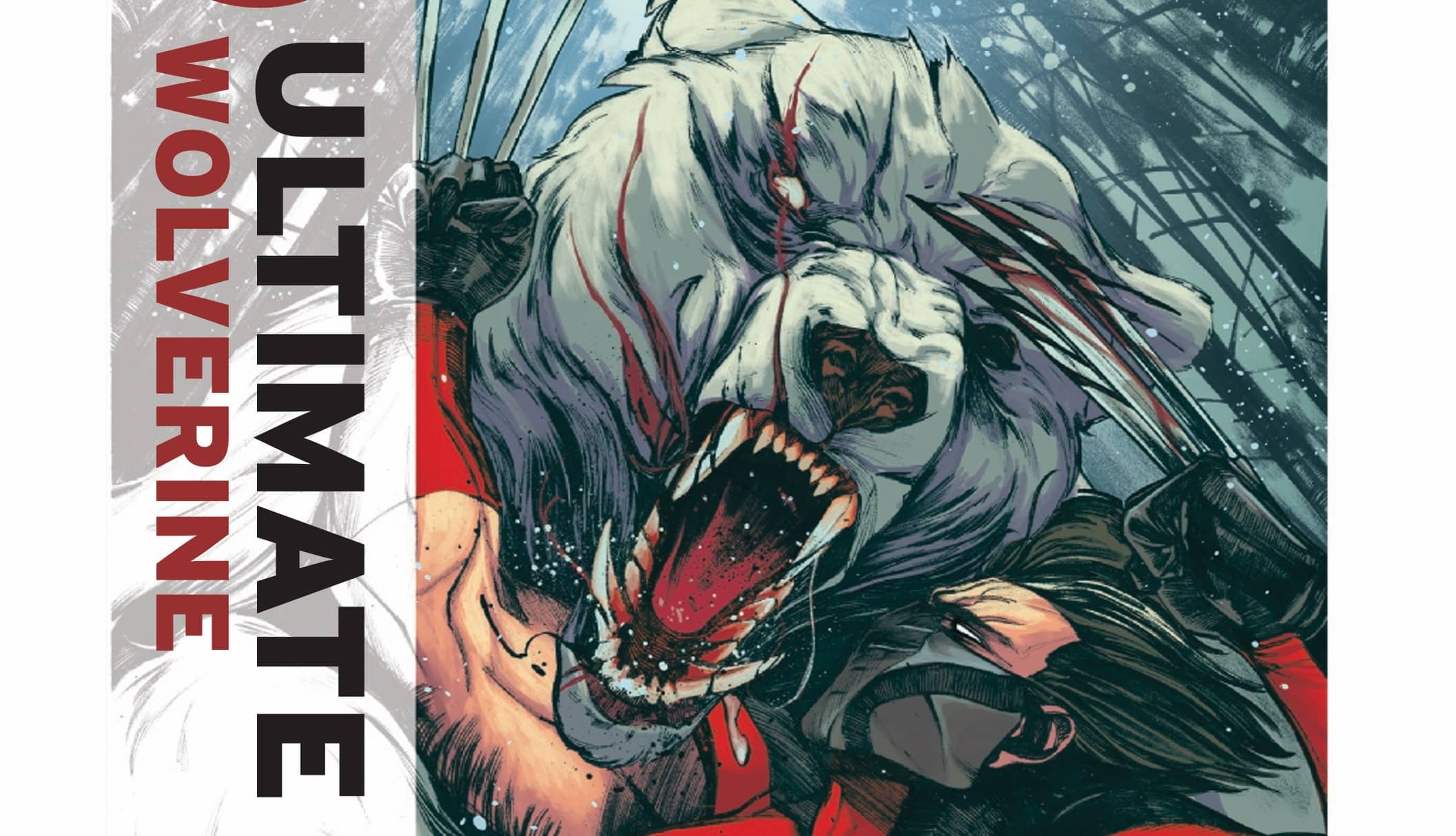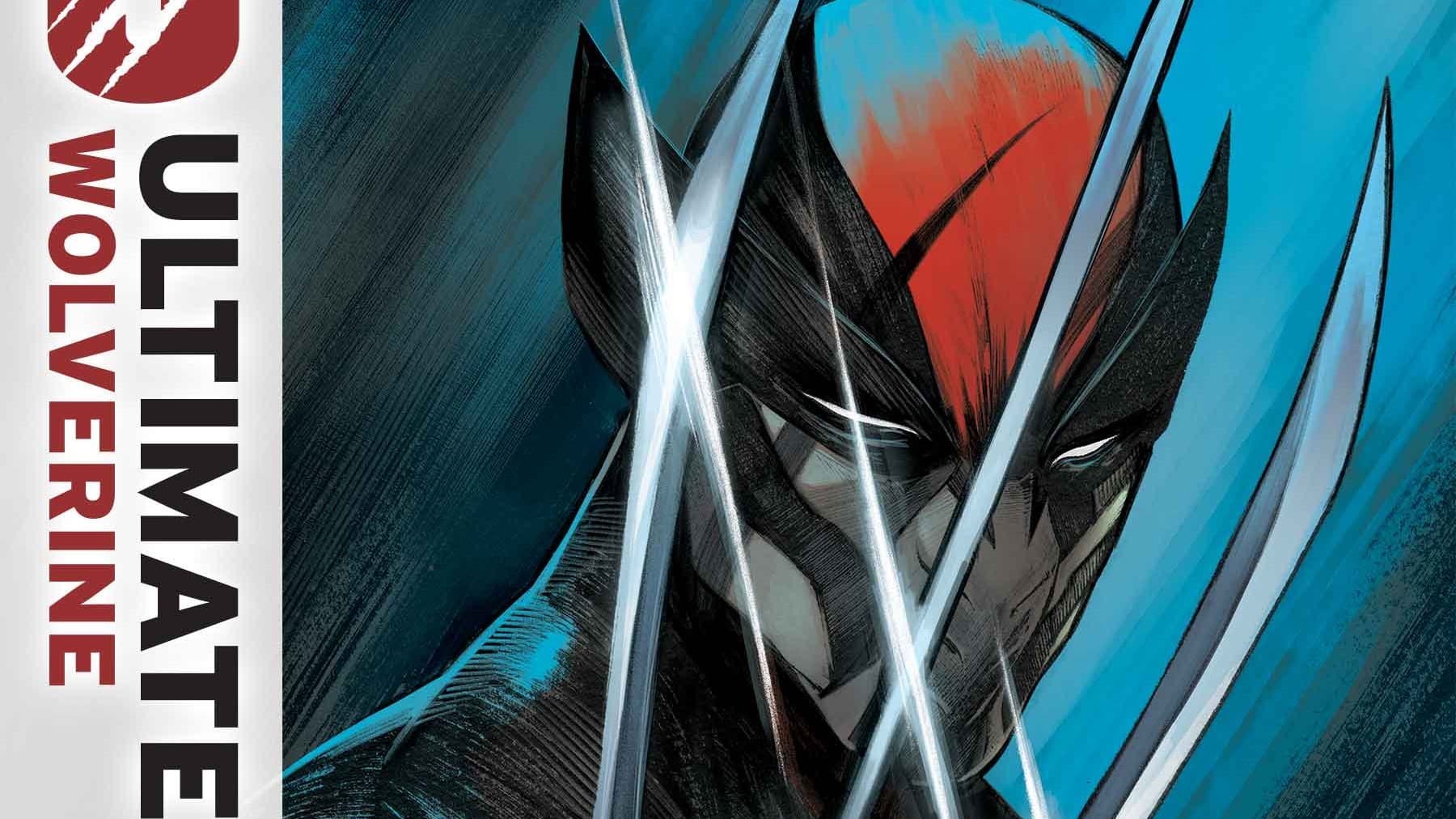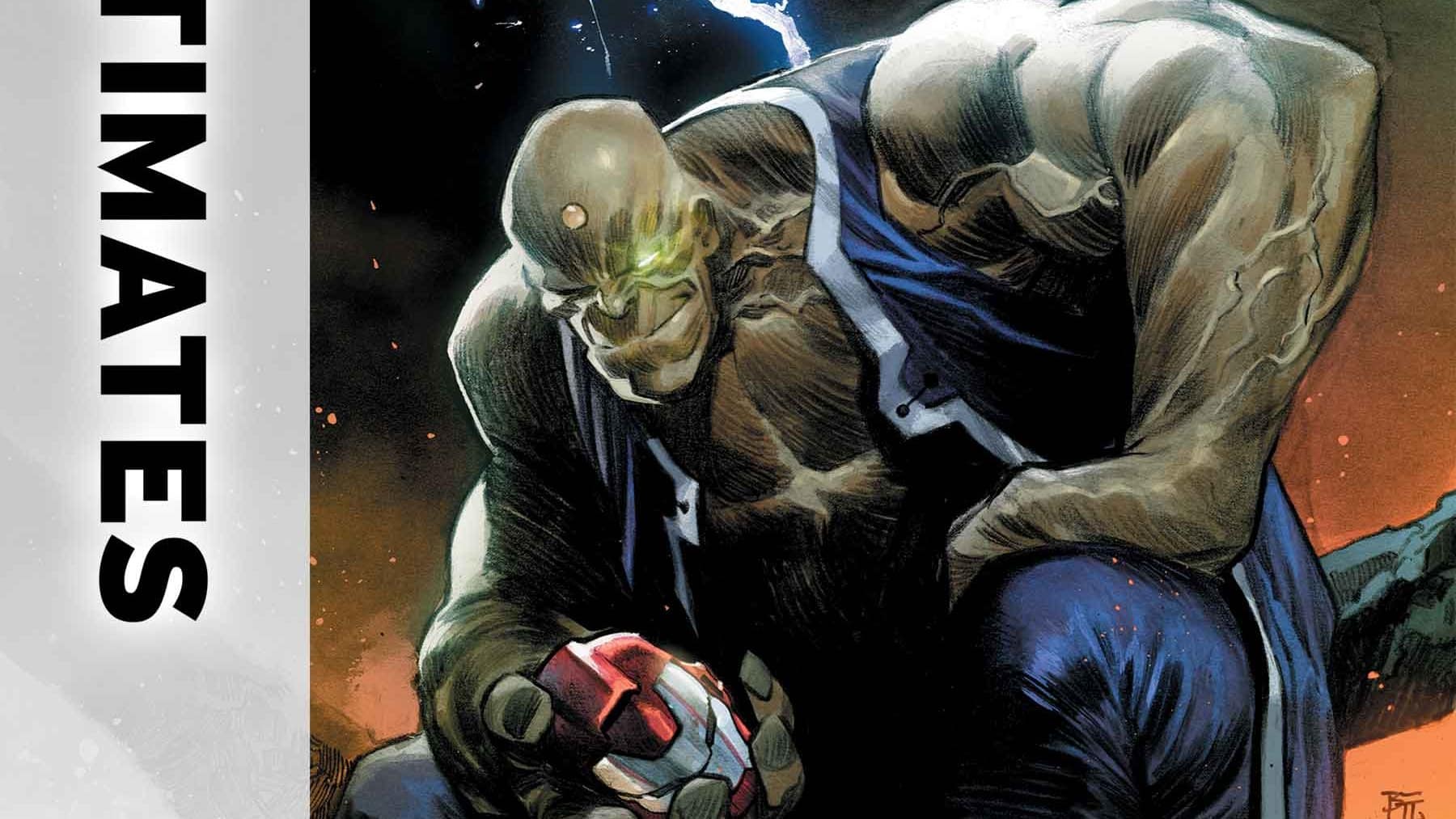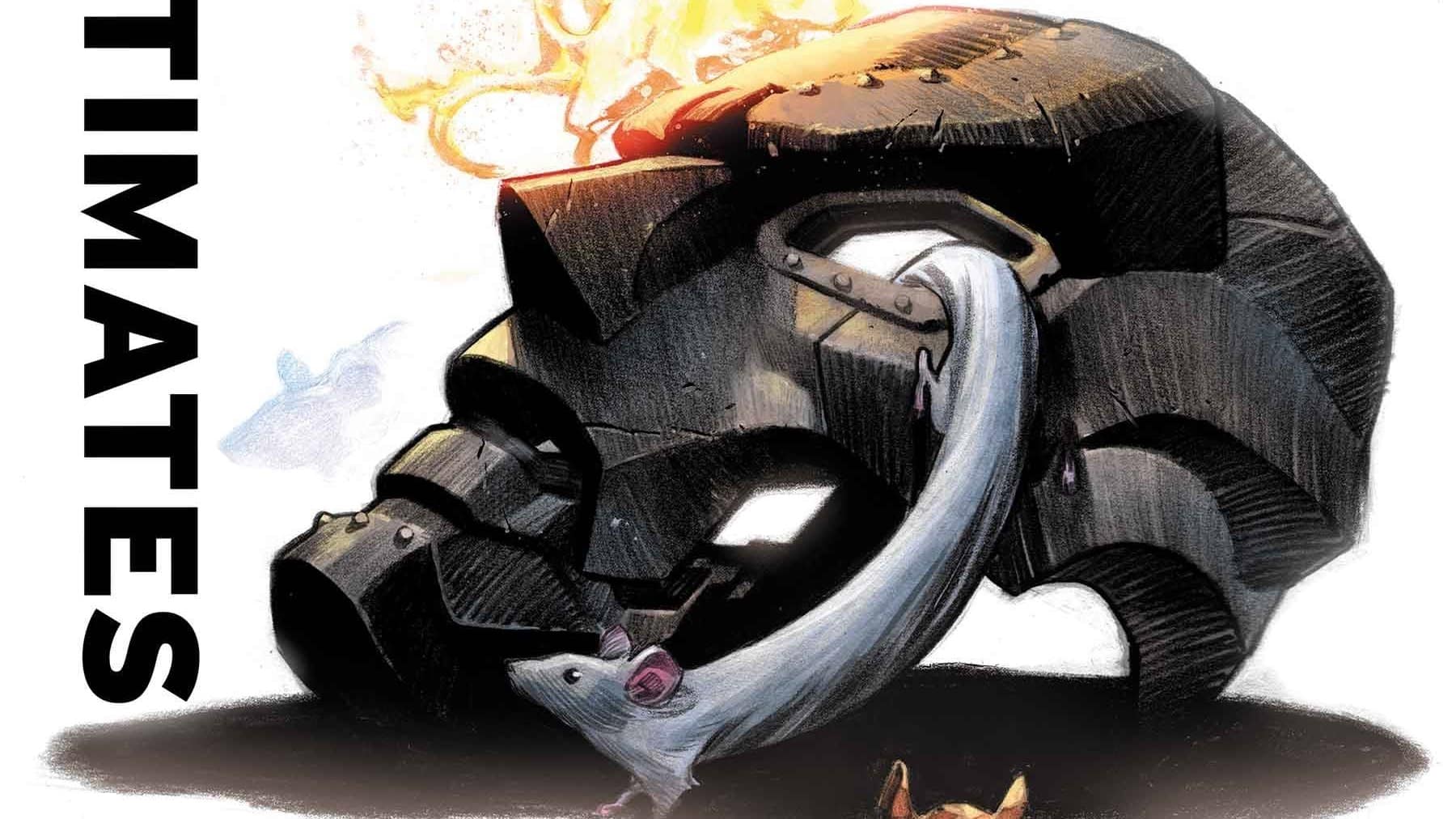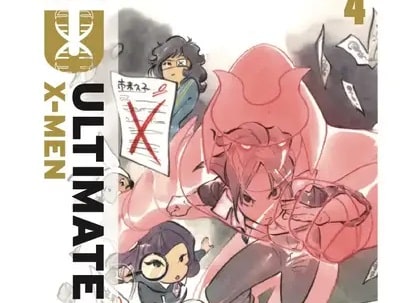THE WINTER SOLDIER THAWS? Wolverine’s confrontation with Kitty Pryde and Gambit leaves him disoriented, violent and questioning his Maker’s Council overlords. Who is “Logan”? Ultimate Wolverine #4 was written by Chris Condon, drawn by Alessandro Cappuccio, colored by Bryan Valenza and lettered by Cory Petit.
Survivor. Soldier. Hunter. Specimen. Animal. Relentless. Sputnik. No, that’s not a grindset influencer’s mantra, it’s the Earth-6160 Winter Soldier’s trigger sequence, which in Ultimate Wolverine #4 activates too late — with dire consequences. Building on the reveal of the last issue, which saw Kitty Pryde do what Nightcrawler was unable to in issue #1 and nudge Logan’s memory, the conceit at the heart of this issue is the battle between Logan’s primal rage and his humanity.
Chris Condon and Alessandro Cappuccio’s Ultimate Wolverine is in essence a horror-genre reimagining of Barry Windsor-Smith’s “Weapon X.” This issue bears the strongest resemblance to the original so far, and aligns with and diverges from similar storytelling techniques to great effect in places.
The two main criticisms I had of the series after three issues were 1) the depiction of violence, while visually striking in its brutality, had become a little repetitive and 2) the silent killer trope, which has been deployed to great effect so far, risked missing the chance to establish a more complex pathos for the character. This issue addressed both of these concerns in an unusual and compelling way, combining intertextuality and extended metaphor.
Let’s see how the creative team pulled it off.
Who you calling specimen?

The structural ambition of Ultimate Wolverine #4 is to tell the same story twice, deploying literal and metaphorical narratives in parallel with each other. The one presented on the page for the majority of the issue is the extended metaphor of Logan’s inner conflict, while the one occurring in the real world is told through narrative caption boxes. We as the reader, therefore, are required to imagine the fear and panic in the laboratory as the assembled scientists watch their Winter Soldier break his containment. How, then, do Condon and Cappuccio influence what the reader is imagining? Intertextuality, baby.
If there’s one thing you can bet on as a comic book writer, it’s that most comic book readers have read other comics. And lots of them. But not all, so you may also want to accommodate new readers. What Condon and Cappuccio do here, which many comic creatives do, is create a dual track of references. This layering effect is what, for me as someone familiar with Barry Windsor-Smith’s “Weapon X,” really elevates this comic. But even for those who haven’t read it, there’s a strong visual language within this series that helps paint a picture in the reader’s mind.
The first direct allusion to “Weapon X” is the use of a variety of different colored text boxes that pepper the page to represent different people’s voices. They are participants but not the focus of the narrative, within the story but commenting as though they are external to it. Here, as they are in “Weapon X,” they are scientists operating on Wolverine, trying to bring medical control to the chaos. It’s important to understand the chaotic yet professional and rehearsed nature of the scene — imagine emergency surgery that’s rapidly going wrong.
Drawing a direct parallel to such a memorable scene in such a seminal Wolverine comic really helps bring the scene in this comic to life for me. However, there are some notable variations that make the allusion work for this story in particular. The narrative caption boxes don’t have quite the same disorienting effect as they do in “Weapon X,” partially because the voices are more conversational and don’t feel as though they’re shouting over each other like they do in the original. Windsor-Smith’s sprawling pages, which are so rich with chaotic detail, are what create and accentuate the effect on which Ultimate Wolverine #4 is relying. Additionally, Logan’s perspective is absent from the original, especially the scene in the first issue Condon and Cappuccio are drawing from (Marvel Comics Presents #73). The complexity of the dual-track narrative is primarily what necessitates the slightly more orderly narrative.
The second layer uses other issues in this run to help the reader imagine the scene in the background. Take Logan’s “here’s Johnny” moment from issue #3 where he’s slowly slashing his way through the steel doors of a van, or at the end of issue #1 where a subtle upward tilt of the head suggests he’s having a moment of lucidity; or the sheer and relentless violence in issue #2 when he decapitates dozens of his own soldiers on a training exercise. These are all classic and memorable horror beats that the creators have sewn throughout the series, and it’s a testament to Cappuccio and Valenza’s distinctive and captivating moody and gruesome art style that this is even possible. Further, when the reader is shown the results of Logan’s berserker rage, we can still be shocked by the sheer brutality of the body horror.
Wolf vs. Ground Bear

The most crucial, ambitious narrative technique deployed in this issue, however, is the extended metaphor of the Wolf vs. the Bear. In terms of what is presented on the page, the scene starts with a wolf with golden glowing eyes post-kill, stalking through a snowy forest. Picking up the scent of prey, the wolf begins to stalk a giant polar bear with red glowing eyes. Once they encounter one another, a frenzied fight breaks out; the bear wins. Continuing toward what appears to be the edge of the forest, the bear believes it has won. The wolf attacks again. Again, the bear dispatches it handily. Approaching death’s door, the wolf prepares for a final assault. As he does, other figures come into view. Soldiers, a dead man and the Winter Soldier himself appear as the competing forces of Dr. Prostovich’s mind control trigger sequence, and the name “Logan” repeats over the final panel, which Petit’s arrangement has overlapping one another, wrestling for control. The page turns to a double-page spread of the bear and the wolf launching at one another for the final time. We never find out who wins, at least not directly. The page turns to reveal another phenomenal double-page spread. This time it’s Wolverine standing, claws bared, in the center of a room filled with the mutilated dead bodies of guards and scientists.
So what does it all mean? My initial reading was that the wolf represented Logan and the bear represented the monolith of the Eurasian empire. The bear is, after all, a Russian symbol of strength. However, that doesn’t take into account the fact that the catalyst for the scene is Kitty Pryde activating memories within Logan at the end of the previous issue, and isn’t any different than what we saw in issue #2.
Upon closer inspection, it’s clear that this conceit is designed to explore Logan’s inner conflict. The wolf represents the version of him that the Eurasian Empire and Dr. Prostovich are trying to weaponize — the feral, primal beast capable of unimaginable violence. The bear, meanwhile, represents Logan’s humanity; his history of friendship, love and resistance. He is still a beast capable of great violence — he is ultimately the product of The Maker’s world of cruelty and hegemony, yet he has experienced the joy that life has to offer in love and kinship that we’ve observed throughout this series so far. The most telling aspect of the scene is that the bear is trying to leave the woods. The wolf is desperately attempting to drag the bear back into the woods, into the arena of violence and a bitter struggle for survival, to suppress his humanity and desire to do and be better — just as Dr. Prostovich is through mind control. Logan, then, is both wolf and bear.
The purpose of this extended metaphor, and it is extended — it takes up the majority of the issue — is to humanize Logan to the point where when the double-page spread reveals the almost unimaginable impact of his violence, the reader doesn’t just recoil in terror but feels sympathy and empathy for the character. Is the length of the scene excessive? Could it have been achieved in fewer pages? Some may feel that way; I was cool with it.
The Phoenix Specimen

While the first two-thirds of the issue focus inward, the last third bursts open the world of mutants and their history within the 6160. Leading the handful of scientists left alive after Logan’s jailbreak through the subterranean passages of the Kremlin into a complex called the Cerebellum, Dr. Prostovich delivers the biggest reveal of the series so far: Jean Grey is alive and is being controlled by the brain of the dead Charles Xavier, which is in turn being controlled by the Eurasian Empire’s leaders.
I really enjoyed this reveal. The first and most obvious observation is that it opens up a really exciting opportunity for retrospective storytelling (Who is this Jean Grey? How did she get there? What is the “Poltava incident”?) and future storytelling. The imagery of Jean strung up like a certain someone on the cross is on the nose, suggesting potential salvation not just for Logan but for the wider resistance and Jean herself, while the disembodied brain of Xavier delivers the body horror gruesomeness that this series is doing so well.
While it may be a Wolverine title, this series has the potential for a much broader scope than Ultimate X-Men does, which is very localized. The criticism I referenced earlier about the narrative style restricting opportunities for internality and empathy may be unlocked by a future pairing of Logan and Jean, so the nature of their relationship moving forward is a real point of interest. So many Wolverine stories have been unlocked by either Lone Wolf and Cub-style or romantic stories in the past, yet I’m skeptical about both potential dynamics here. Regardless, Condon and Cappuccio have me hooked, so I’m excited to see how they tackle it.
Weapon X-traneous Thoughts
- Great to see the Russian mutants Vanguard, Dark Star and Ursa Major get a shoutout here, even if their lives were as grim as they sound.
- For those playing along at home, Ultimate Cyclops, Emma Frost and Rogue are probably the biggest names left on the board after references to Jean Grey, Charles Xavier and Magneto in this issue.
- It’s good to see the 6160 universe’s Logan earn his classic “Ground Bear” nickname.
Buy Ultimate Wolverine #4 here. (Disclaimer: As an Amazon Associate, ComicsXF may earn from qualifying purchases.)
Jake Murray spends far too much time wondering if the New Mutants are OK. When he's not doing that, he can be found talking and writing about comics with anyone who will listen. Follow him @stealthisplanet.bsky.social.

